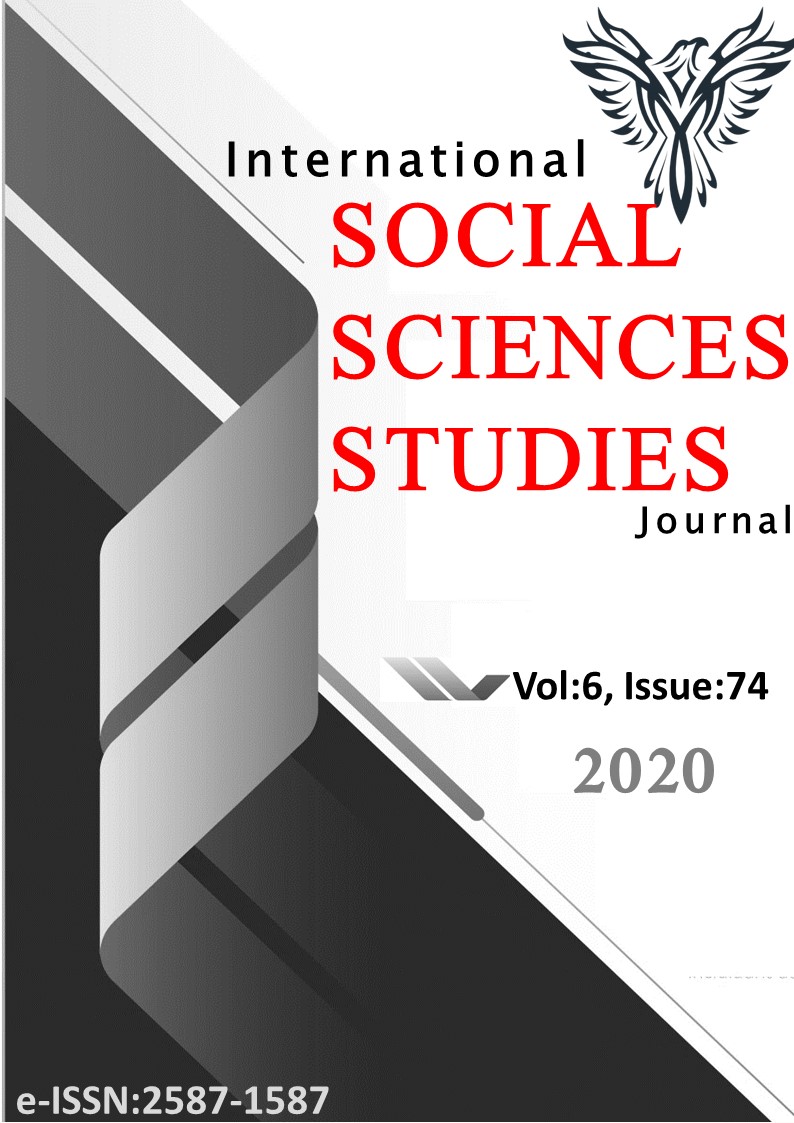Author :
Abstract
Sultan III. Mehmed’in (1574-1595) saltanatı devrinde İran ve Avusturya savaşlarındaki başarısızlık, ordunun sınırlarda koşullandırılmasına neden olmuş ve bunun sonucunda Anadolu’da atlı ve silahlı gruplar türemiştir. Bu kişilere bir de sefer firarileri eklenmiş ve Anadolu’da sayıları gittikçe artan isyancı grup, halkın canını ve malını gasp etmeye başlamıştır. İşte bu grupların başında bulunanlardan biri Karayazıcı lâkabı ile anılan Abdülhalim’dir. Anadolu’da Celali İsyanları olarak bilinen bir dizi isyanın arasında en büyüğü XVI. yüzyılın sonrasında onun tarafından başlatılmıştır. Bu çalışmada amaç, Halvetî tarikatı şeyhlerine ait olan “Necmü’l-Hüdâ fi Menakıbı’ş-Şeyh Şemseddîn Ebû’s-Senâ”(Güneren, 2010) ve “Hediyyetü’l-İhvân” (Türer, 2011) adlı bu iki eserde, Karayazıcı ve çetesinin sebep olduğu zulüm ve korkunun Sivas ile İstanbul’da halk üzerinde yarattığı etki, yazarların kendi perspektifleri nispetinde anlatılmaya çalışılacaktır. Fakat burada verilen bilgiler sıra dışı pek çok öğe içerdiğinden bunların değerlendirilmesi dönemin kronikleri ile mukayeseli olarak verilmeye çalışılacaktır.
Keywords
Abstract
During the reign of Sultan Mehmed III (1574-1595), the failure of the Iranian and Austrian wars caused the army to be conditioned at the borders and as a result the horsemen and armed groups in Anatolia emerged. An additional flight deserters were added to these people and the growing number of rebel groups in Anatolia began to seize the lives and property of the people. One of the leaders of these groups is Abdulhalim, who is known as Karayazici. Among the series of rebellions known as Celali Rebellions in Anatolia, the biggest one was XVI. century was started by him. The aim of this study was to investigate the persecution and fear caused by Karayazici and his gang in these two works, “Necmü'l-Hüdâ fi Menakıbı’ş-Şeyh Şemseddîn Abu Sen-Senâ” and “Hediyyetü’l-İhvân ait, which belonged to the sheikhs of the Halveti tariqat. The effect on the people in Turkey will be explained according to their own perspectives. However, since the information given here contains many unusual elements, their evaluation will be tried to be compared with the chronicles of the period.
Keywords
- Aydın, Ö. (2020). “Sivâsî Şeyhlerine Ait Menakıbnâmelerde Karayazıcı İsyanı” International Social Sciences Studies Journal, (e-
- ISSN:2587-1587) Vol:6, Issue:74; pp:5461-5471. SİVÂSÎ ŞEYHLERİNE AİT MENAKIBNÂMELERDE KARAYAZICI İSYANI The Karayazici Rebellion İn Epic Story (Menakibname) Of Sivasi Shaykhs Dr. Özden AYDIN ozdenaydin58@gmail.com, Sivas/Türkiye. ORCID ID: https//orcid.org/0000-0003-0729-9183 ÖZET Sultan III. Mehmed’in (1574-1595) saltanatı devrinde İran ve Avusturya savaşlarındaki başarısızlık, ordunun sınırlarda koşullandırılmasına neden olmuş ve bunun sonucunda Anadolu’da atlı ve silahlı gruplar türemiştir. Bu kişilere bir de sefer firarileri eklenmiş ve Anadolu’da sayıları gittikçe artan isyancı grup, halkın canını ve malını gasp etmeye başlamıştır. İşte bu grupların başında bulunanlardan biri Karayazıcı lâkabı ile anılan Abdülhalim’dir. Anadolu’da Celali İsyanları olarak bilinen bir dizi isyanın arasında en büyüğü XVI. yüzyılın sonrasında onun tarafından başlatılmıştır. Bu çalışmada amaç, Halvetî tarikatı şeyhlerine ait olan “Necmü’l-Hüdâ fi Menakıbı’ş-Şeyh Şemseddîn Ebû’sSenâ”(Güneren, 2010) ve “Hediyyetü’l-İhvân” (Türer, 2011) adlı bu iki eserde, Karayazıcı ve çetesinin sebep olduğu zulüm ve korkunun Sivas ile İstanbul’da halk üzerinde yarattığı etki, yazarların kendi perspektifleri nispetinde anlatılmaya çalışılacaktır. Fakat burada verilen bilgiler sıra dışı pek çok öğe içerdiğinden bunların değerlendirilmesi dönemin kronikleri ile mukayeseli olarak verilmeye çalışılacaktır. Anahtar Kelimeler: Osmanlı İmparatorluğu, Sivâsîler, Menakıbnâme, Karayazıcı İsyanı.





